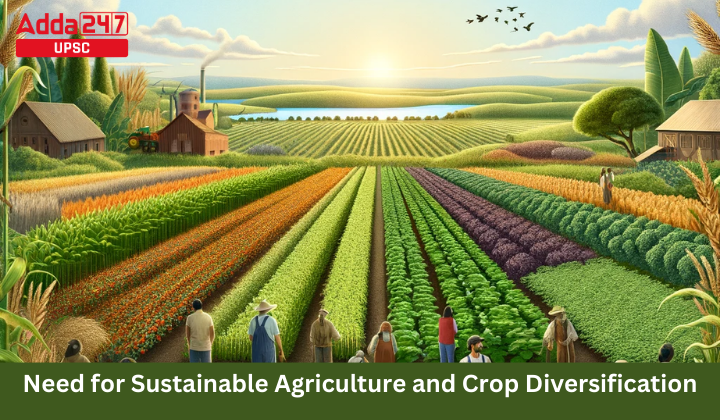Table of Contents
The agricultural sector, vital for human survival and economic stability, is at a crossroads. Recent reports, notably from the United Nations Food and Agriculture Organisation (FAO), have highlighted the dire consequences of current agrifood systems. These systems, driven by unsustainable practices, not only incur heavy financial costs but also lead to environmental degradation and social inequalities. This article delves into the challenges posed by intensive agriculture and explores the potential of crop diversification as a solution for sustainable agricultural development.
Burden of Current Agrifood Systems
Economic and Environmental Costs
The FAO report underscores the staggering hidden costs of modern agrifood systems, amounting to over $10 trillion globally. In countries like India, these costs represent a significant portion of the GDP, manifesting in increased poverty, environmental damage, and health-related issues.
Unsustainable Practices
The root of these escalating costs lies in “business-as-usual” activities, including monocropping and chemical-intensive farming. These practices have undermined biodiversity, soil health, and water resources, necessitating a transformative approach in agrifood systems.
Impact of Intensive Agriculture in India
Green Revolution and Its Consequences: India’s adoption of the Green Revolution’s methods, focusing on high-yielding varieties of paddy and wheat, has led to impressive productivity gains. However, this has come at a high cost: loss of seed sovereignty, decline in crop diversity, and ecological damage.
Financial Strain on Farmers: The reliance on expensive inputs has drastically increased farmer indebtedness, making agriculture economically unviable for many.
Policy Environment and Its Implications
Procurement and Subsidy Policies: India’s National Food Security Act and the role of the Food Corporation of India (FCI) in crop procurement have inadvertently favored rice and wheat over nutritious coarse grains, affecting food security and nutritional outcomes.
Impact on Small and Marginal Farmers: These policies, coupled with global market fluctuations, have significantly affected smallholder farmers, making them vulnerable to food and nutrition insecurity.
Case for Crop Diversification
Benefits of Multi-Cropping Systems: Diversifying crops, especially through indigenous multi-cropping systems, can revitalize land and soil, improve farmers’ incomes, and enhance ecological health.
Challenges and Criticisms: While critics argue that diversification may lead to reduced yields, the FAO report highlights the hidden costs of current practices and the long-term benefits of diversification.
Transitioning to Sustainable Practices
Gradual Shift from Mono-Cultivation: The transition towards sustainable practices needs to be systematic, allowing farmers to adapt gradually, from reducing chemical inputs to adopting natural farming and integrating livestock.
Economic Modeling of Sustainable Pathways: Preliminary models show promising outcomes for both ecological health and farm incomes in both short and long-term scenarios.
Overcoming Transition Challenges
Addressing Local Seeds and Market Access: Transitioning requires addressing challenges related to seed availability, market access, and labor needs.
Institutional Support and Policy Interventions: Successful implementation of diversified cropping systems demands collaborative efforts among various stakeholders, including institutions, policymakers, and social groups.
Conclusion
The shift to sustainable agricultural practices, particularly crop diversification, is not just an environmental imperative but also an economic and social necessity. While the transition poses challenges, it offers a viable path to revitalizing agriculture, enhancing food security, and building resilient communities. As the world grapples with the consequences of unsustainable agrifood systems, the time is ripe for a paradigm shift towards more sustainable, equitable, and productive agricultural practices.



 TSPSC Group 1 Question Paper 2024, Downl...
TSPSC Group 1 Question Paper 2024, Downl...
 TSPSC Group 1 Answer key 2024 Out, Downl...
TSPSC Group 1 Answer key 2024 Out, Downl...
 UPSC Prelims 2024 Question Paper, Downlo...
UPSC Prelims 2024 Question Paper, Downlo...





